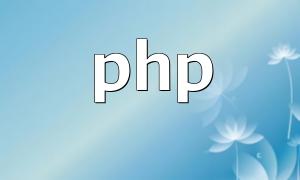Using PHP for dynamic content generation has become a popular practice in modern website development. Configuring PHP in an IIS (Internet Information Services) environment can significantly improve website performance and user experience. This article will provide a detailed guide on how to successfully mount PHP in IIS, while adhering to Google’s search engine optimization (SEO) best practices to ensure better visibility for your website in search engines.
IIS (Internet Information Services) is a powerful web server developed by Microsoft that supports various technologies, including ASP.NET and PHP. PHP is a widely used server-side scripting language commonly used to develop web applications. By combining IIS and PHP, you can not only maximize the efficient performance of IIS but also enjoy the flexibility and powerful features that PHP offers.
Configuring PHP on an IIS server involves some basic setup. Below is a step-by-step guide on how to complete the installation process:
First, go to the official PHP website to download the appropriate version of PHP for Windows. Be sure to select the version that matches your operating system architecture (x86 or x64). The download link can be found on the official PHP website.
Next, open the IIS Manager and follow the steps below:
1. Open IIS Manager.
2. Right-click on the target website and select “Properties.”
3. In the “Handler Mappings” section, add a new handler pointing to the PHP executable file’s path. For example:
4. Configure MIME types to support PHP extensions.
Create a file named info.php in the root directory of your website and add the following code:
Access your website through the browser by adding /info.php to the URL. If you see the PHP configuration page, the installation was successful.
After mounting PHP, you will also need to perform some SEO optimization to improve the website’s search engine ranking. Here are some optimization suggestions:
Using appropriate caching strategies, such as Opcode caching and page caching, can significantly improve website load times, which is one of the important factors Google uses to evaluate website quality.
Creating user-friendly URL structures can improve your website’s SEO performance. You can set up URL rewrite rules to convert dynamically generated pages into static links, which not only helps with SEO but also enhances the user experience.
Ensure that the content on your website is relevant and of high quality. This will help attract more users and improve your search engine ranking. Additionally, use keywords appropriately, without overstuffing them.
Mounting PHP in an IIS environment is a relatively straightforward process, but to ensure your website runs successfully and ranks well in SEO, you must also focus on configuration and optimization. With the help of this article, you will be able to effectively install PHP and enhance your website’s SEO performance, ultimately improving traffic and user experience.









